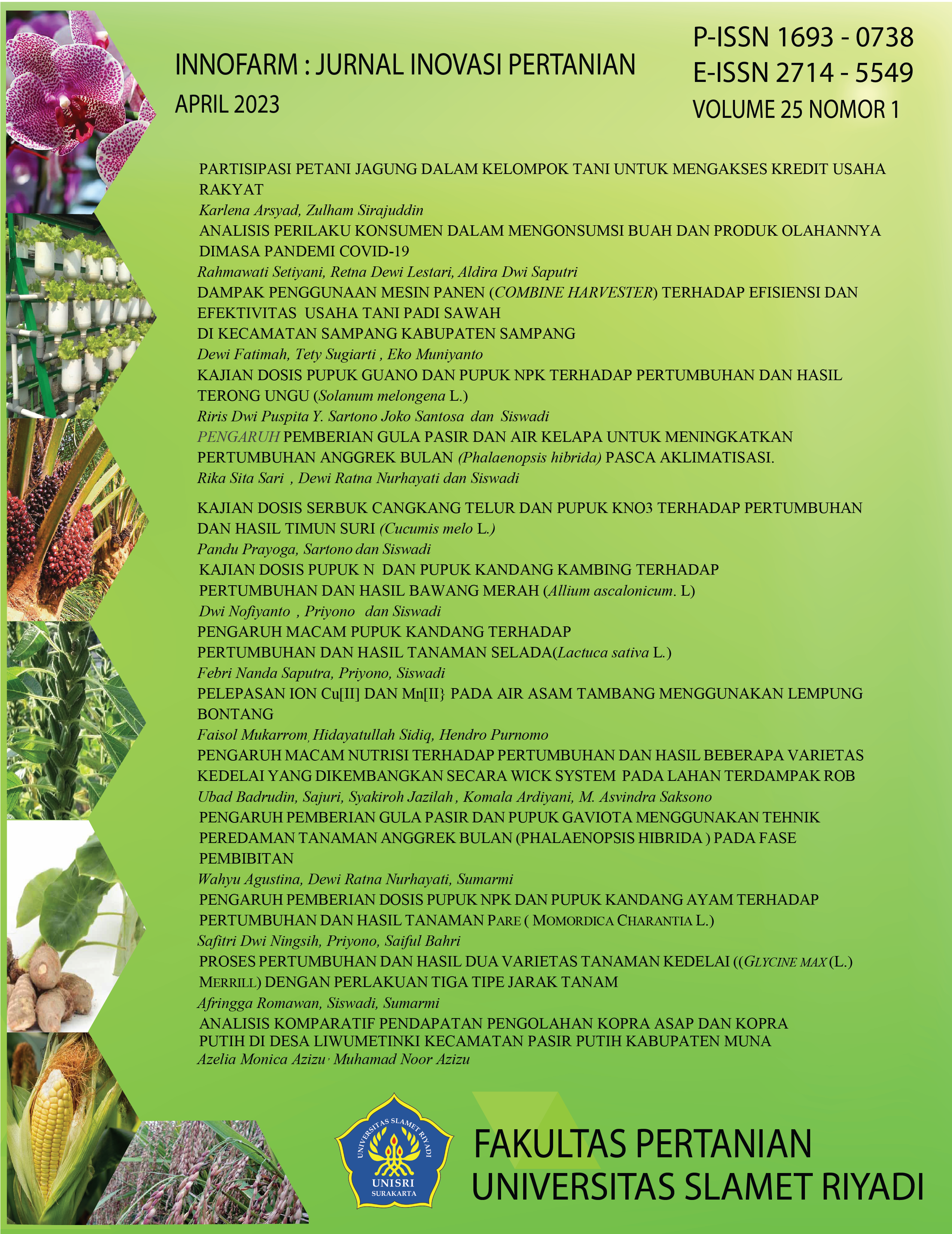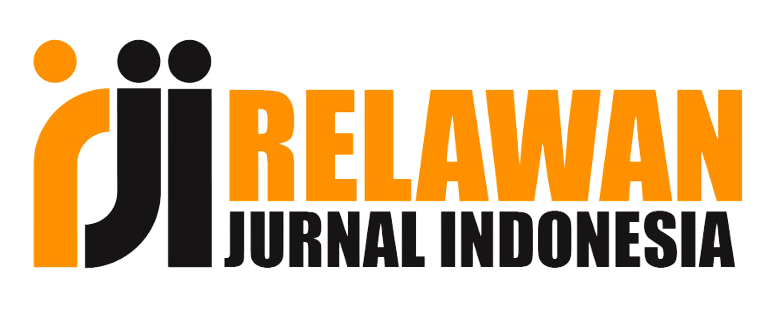STUDY OF THE DOSE OF FERTILIZER N AND GOAT MANURE ON THE GROWTH AND YIELD OF SHALLOTS (Allium ascalonicum. L)
Keywords: N fertilizer, goat manure, growth, yield, shallot
DOI:
https://doi.org/10.33061/innofarm.v25i1.8951Abstract
This study entitled "Study of Dosage of N Fertilizer and Goat Manure on the Growth and Yield of Shallots (Allium Ascalonicum. L)". The aim was to study the effect of N fertilizer and goat manure on the growth and yield of shallot plants. Implementation on 18 November 2022 to 20 January 2023 in Senayu Hamlet, Tunggur Village, Kec. Slogohimo, Kab. Wonogiri, Central Java. The method used is RAKL Factorial with 2 factors. Factor 1 was goat manure (K) with 3 levels, including: K0 = Control, K1 = 100 g/plant, and K2 = 200 g/plant. Factor 2 is the dose of N fertilizer with 4 levels, as follows: D0 = No treatment, D1 = 0.5 gr/plant, D2 = 1 gr/plant, and D3 = 1.5 gr/plant. So that from the design there are 12 combinations and repeated 3 times. Parameter data were analyzed using ANOVA and then continued using the 5% level DMRT test. The conclusion shows that the dose of N fertilizer affects the observation of the number of leaves, the application of goat manure affects the observation of plant height, tuber diameter, and tuber fresh weight per plant. The interaction of N fertilizer doses and goat manure does not affect all parameters.
Downloads
Published
Issue
Section
License
Copyright (c) 2023 Dwi nofiyanto, Priyono Priyono, Siswadi Siswadi

This work is licensed under a Creative Commons Attribution-NonCommercial 4.0 International License.
Authors who publish this journal agree to the following terms:
- Authors retain copyright and grant the journal right of first publication with the work simultaneously licensed under a Creative Commons Attribution License that allows others to share the work with an acknowledgement of the work's authorship and initial publication in this journal.
- Authors can separately make additional contractual arrangements for non-exclusive distribution published by the journal (e.g., publish it in a book), with an acknowledgement of its initial publication in this journal.
- Authors are allowed and encouraged to send their work via online (e.g., in the institutional repositories or their website) after published by the journal.


















